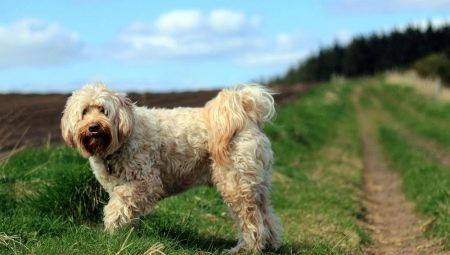For many years now, dogs have been faithful companions. Loyal, affectionate and curious animals not only protect their owners, but also fill them with vital energy. The high demand for this type of pet provoked the appearance of a huge number of breeds. Breeders of many countries around the world are constantly working to improve the already known species and to develop new ones.
Before acquiring a four-legged friend, professional dog breeders recommend carefully study more than a dozen breeds and only then make the final choice. Often beginner breeders prefer popular animals and do not pay attention to less common species. One of these breeds is the Tibetan Terrier, which must be paid attention to.
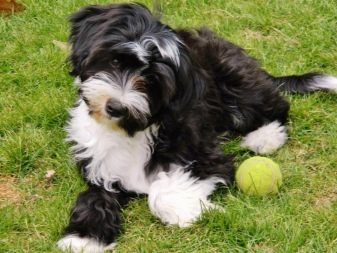
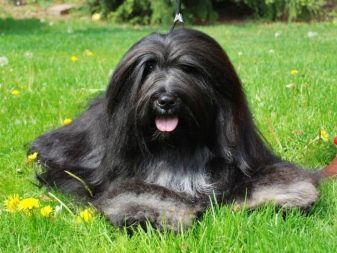
Origin history
The Tibetan Terrier is one of the oldest breeds in the world, the true origin of which is still not known exactly. The animals got their name thanks to tourists from Europe who, while visiting Tibetan temples, admired shaggy guard dogs that looked very much like terriers.
Despite the fact that this breed has nothing to do with terriers, its name has been preserved and has survived to this day.
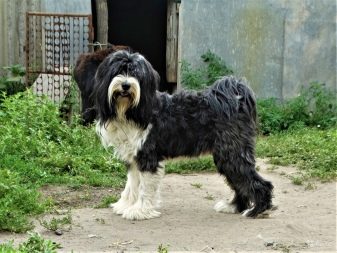
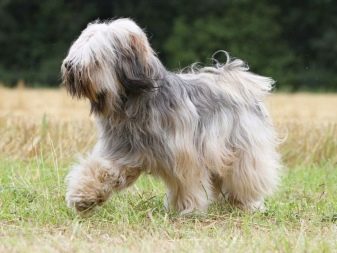
Ancient inhabitants used dogs not only as guards, watchmen and just four-legged friends, but also as a talisman for good luck. Centuries ago, animals could not be traded. Sacred dogs were allowed only to give or use as a reward.
Due to the fact that for many centuries Tibet was an isolated territory, it was possible to avoid mixing blood, and the breed survived to this day without genetic changes. Only in 1920 did this breed enter the territory of Europe, and English breeders began the process of dog distribution. For several years, the animal has already been officially registered and recognized. International Cynological Association.
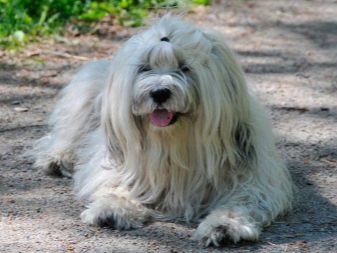
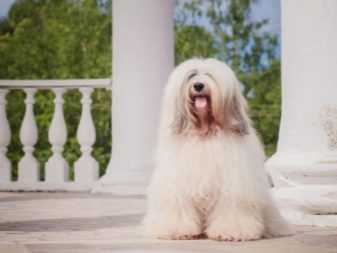
Breed description
The Tibetan Terrier is a cute shaggy beast that has a funny appearance. The animals have a strong and proportional body, as well as a large and massive bone skeleton. The entire surface of the body is covered with a well-developed muscular system and dense skin. This breed has pronounced gender differences. The males are distinguished by a stronger, more powerful and stocky physique. The parameters of purebred males should have more accurate characteristics of the standard. The requirements for bitches are not so strict.
The maximum weight of adults can reach 15 kg, and growth often exceeds 42 cm. Despite its rather large size, a moving animal has a light and graceful gait.
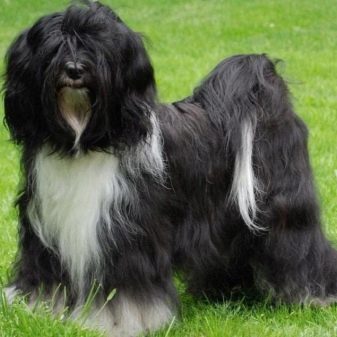

A strong neck area is located on the square torso, which expands significantly to the shoulders. The chest is oval and deep. The direct zone of the back has no hollows and bulges. There are no fat folds or sagging on the stomach. The length of the tail directly depends on the size of the animal.
The proportional skull has the correct shape and medium size. The entire surface of the head is covered with long and thick hair. The narrow and convex frontal zone has a wedge-shaped shape. This breed has a pronounced line of transition from the forehead to the muzzle.
Strong and straight limbs are located strictly parallel to each other. The hind legs have a stronger muscular system with pronounced articular areas.
The shape of the front legs is more elegant and refined.

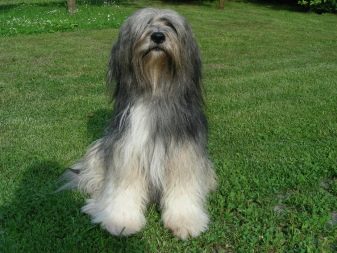
Round eyes are covered tightly for centuries. The eyeball is brown. Puppies that are born with bulging or deep-set eyes are rejected immediately after birth. The entire surface of the jaw is covered with a strong and developed muscular system. Elastic lip folds completely cover all teeth. At the end of the straight nose is a black lobe and open round nasal passages.
The triangular auricles are of medium size and are located almost on the crown. Protruding ears are considered a defect in the breed. The entire surface of the auricles is covered with thick and long hair.
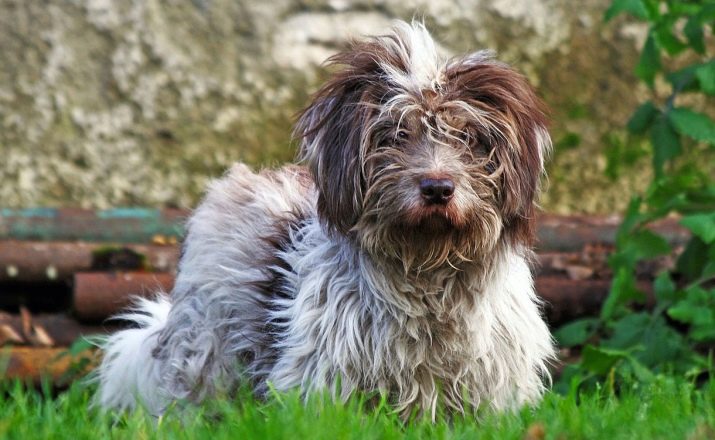
Particular attention should be paid to wool, which consists of two elements:
- undercoat - thick, airy and dense;
- axis - long, elastic, thin and tough.
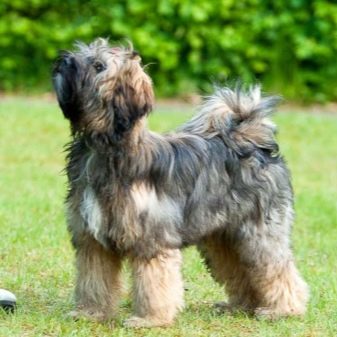
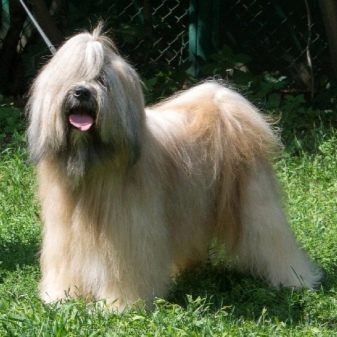
A distinctive feature of this breed is the presence of even parting in the area of the spine and a beautiful shine of wool in all areas. Long, fluffy and soft hair covers the entire surface of the dog’s body and creates the effect of a fur coat. The only place without hair is the tip of the nose. The color scheme of the wool cover is represented by the following shades:
- the black;
- white;
- peach;
- cream;
- grey;
- gold.
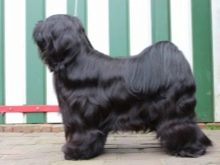
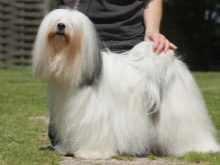
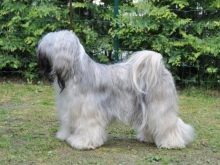
Wool can be dyed in one tone, or simultaneously in several shades.
Character
Despite the physical strength and external power, the beast has a gentle and responsive character, and its high intellectual abilities allow the pet to understand its owner from the first word. The main character traits of this breed:
- friendliness;
- tolerance;
- sociability;
- lack of aggression;
- sociability;
- boundless devotion;
- playfulness;
- cunning;
- quick wits;
- persistence;
- stubbornness;
- curiosity;
- vigilance.
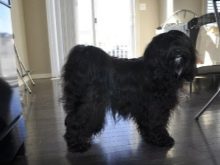

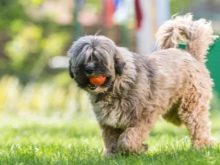
A calm and kind animal quickly and easily makes contact with all family members, including young children and other pets. In the rare moments of peace, the animal loves to sit next to the owner, who must necessarily stroke it and sort through the shaggy hair.
Tibetan terriers very poorly tolerate loneliness and prolonged stay indoors. Lack of communication with the owner can provoke depression and psychological disorders.
A born guard and watchman should constantly feel his importance in the family and regularly receive thanks from the owners in the form of praise and goodies, then the pet will be even more willing to fulfill all the duties assigned to him.

Life span
The Tibetan Terrier belongs to the long-lived breeds, which in comfortable living conditions and with a balanced diet can please their owners for 20 years. Despite this positive characteristic, the average life expectancy of pets is 15 years. The following pathologies significantly reduce the lifetime of dogs:
- cataract;
- retinal diseases;
- dislocation of the lens;
- obesity;
- caries;
- infectious diseases;
- diseases of the musculoskeletal system;
- diseases of the joints and muscles;
- Batten's disease.
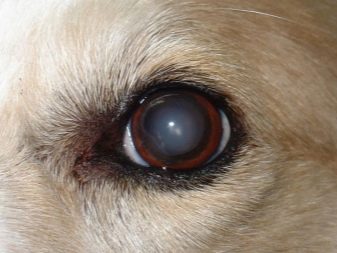
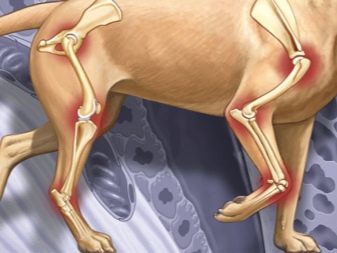
Regular examinations in veterinary clinics and timely access to specialists at the first sign of illness will help prevent the occurrence of these diseases. To extend the life of the pet, vaccination will also help, which protects animals from the most dangerous diseases that can lead to their instant death:
- rabies;
- plague;
- hepatitis;
- enteritis;
- leptospirosis.
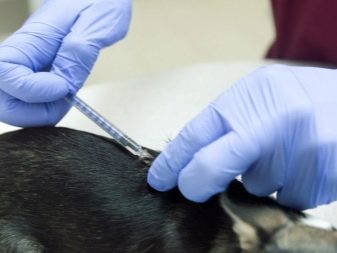
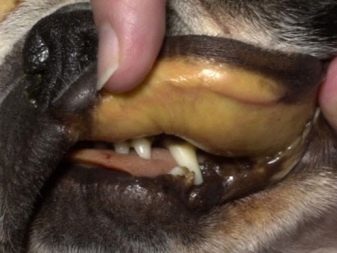
Conditions for keeping
The most comfortable living conditions for the animal can be created in a private country house. Owners should build a spacious enclosure with a warm kennel for the pet, and during the period of severe frost and rain, move the animal into a common house. It is not recommended to keep the dog on a leash. Pets that are kept in the yard need increased care and attention of their owners.
Before buying a dog, residents of city apartments should remove all fragile items, valuable interior items, clothing and electrical wires from the premises. The animal needs to allocate a place for rest and eating. The place to sleep should be away from noise and drafts, and should also be equipped with soft bedding.

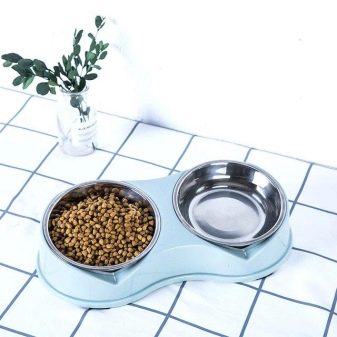
Pets that are kept in city apartments need daily two-time walks. When visiting the street, dogs should not only satisfy their needs, but also receive the maximum amount of physical activity for the development of the muscular system.
Care Rules
Before purchasing a shaggy pet, you must carefully study the rules for caring for him. Particular attention is required to long and thin coat, which must not only be thoroughly combed daily, but also trimmed twice a year. In regions with a hot climate, experts recommend making animals every 2 months very short haircutsthat will prevent them from overheating.
To comb the wool, you need to purchase special brushes and combs that will prevent the appearance of tangles.


To prevent an unpleasant odor, a pet should be bathed every two weeks using special shampoos and conditioners. In the cold season, water procedures can be carried out 1 time in 30 days. After bathing, the dog's hair should be wiped with a terry towel and allowed to dry. Experienced dog breeders do not recommend using an electric hair dryer to dry hair.
To prevent inflammatory processes in the eyes, ear passages and nose, experts recommend inspect these zones every week and, if necessary, remove dirt, mucus and pus. Dog teeth also need attention, which must be constantly treated with special pastes to remove plaque and allowed to bite pets at the pet store with special bones. To adjust the claw length use special nippers regularly.
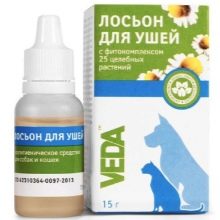
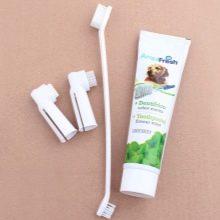
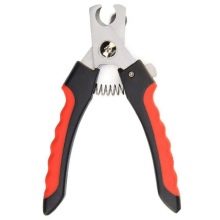
How to feed?
This breed belongs to species that are not picky in food. Animals can be fed with both ready-made feeds and natural products. Experts do not recommend mixing these diets and when choosing one of them constantly adhere to it.
If the owners have chosen ready-made mixtures, then you need to purchase only high-quality feeds that do not contain dyes, preservatives and flavor enhancers. Feeding cheap feed will have a negative effect on the digestive system and can trigger the development of dangerous diseases.

Among natural products, the following components should be preferred:
- meat;
- fish;
- offal;
- cottage cheese;
- kefir;
- cereals;
- eggs
- vegetables;
- greens.



To maintain the vitamin-mineral balance, veterinarians recommend using special vitamin complexes. Dogs should have constant access to clean and fresh drinking water.
It is strictly forbidden to give dogs fried, salted, and smoked food, salt, sugar, citrus fruits, sauces, mayonnaise and food from the hosts table.
How to educate?
In order for the pet to please the owners not only with an unusual and beautiful appearance, but also with good behavior, experts recommend that from the first days of the dog's stay in the house, begin its training and education.
A self-confident and intelligent animal will execute commands only from an energetically strong and powerful master, otherwise the dog will take a leading position and will not only refuse to obey, but will also become wayward and uncontrollable.
From the first days of life, a pet should understand that there is only one owner in the house - this is a person.
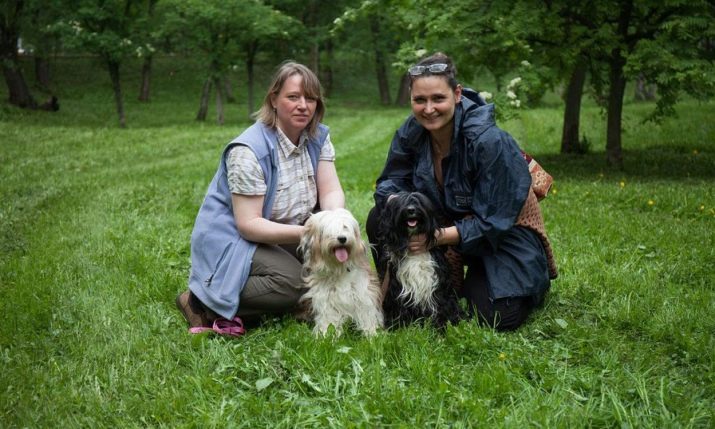
A playful pet very rarely shows interest in learning teams, tricks and new rules, so the owner needs not only to persevere and be patient, but also to turn learning into an interesting game. All tasks should be very concise and take a short period of time in order to constantly keep the interest and attention of the pet. If the animal becomes bored and uninteresting, he will immediately find something for himself, and it will be very difficult to return him to the training process.
In order for the dog to begin to execute commands as accurately as possible, it is necessary to constantly return to their study and repetition. A significant incentive in accelerating training will be praise and treats with treats. It is strictly forbidden to scold, punish and beat the animal. These manipulations will cause aggression and a desire to avenge the offense.
For more information about the Tibetan Terrier breed, see the next video.
